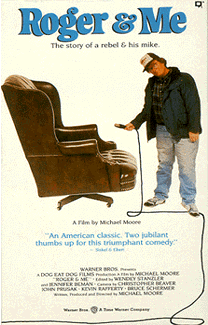Book — Fiction. By Patricia McKissack. 2006. 112 pages.
Historical fiction about the lunch counter sit-ins for ages 9+.
Continue reading
Audio. By Howard Zinn. Read by Matt Damon. 2003. 8 hours, 44 minutes.
Audio book version of excerpted highlights from A People's History of the United States.
Continue reading
Book — Fiction. By Mildred Taylor. 1998. 56 pages.
Cassie witnesses a Black man address a white storekeeper by his first name.
Continue reading
Website.
Portraits by Robert Shetterly and biographies of individuals who have taken a stand for justice.
Continue reading
Film. Directed by Francine Cavanaugh and Adams Wood. 2010. 81 minutes.
This film takes viewers on a gripping emotional journey into a community surrounded by a looming toxic threat.
Continue reading
Book — Fiction. By John Sayles. 2011. 955 pages.
Spanning five years and half a dozen countries, Sayles' novel of historical fiction paints a picture of the late 1890s — from the racist coup in Wilmington, North Carolina, to the bloody dawn of U.S. interventionism in Cuba and the Philippines.
Continue reading
Book — Non-fiction. By Howard Zinn. Introduction by Staughton Lynd. 2011. 192 pages.
A collection of 27 writings on activism, electoral politics, the Holocaust, Marxism, the Iraq War, and the role of the historian.
Continue reading
Teaching Activity. By Bill Bigelow and Bob Peterson. Rethinking Schools. 4 pages.
Using photographs to spark creative writing and critical thinking about child labor issues and social justice.
Continue reading
Book — Non-fiction. By Barbara Ehrenreich. 2008. 256 pages.
Undercover journalism exposing hard realities of life for the working poor.
Continue reading
Picture book. By George Ella Lyon. Artwork by Christopher Cardinale. 2011. 40 pages.
This children's book tells the story of a classic union song written in 1931 and the harsh conditions under which it was written.
Continue reading
Film. By Jordan Mechner. 2004. 26 minutes.
A documentary about the politics and economics of land in the United States, based on the story of a Mexican American village razed in the 1950s to build Dodger Stadium.
Continue reading
Film. Directed by Michael Moore. 1989. 91 minutes.
Documentary chronicling the efforts of the world's largest corporation, General Motors, as it turns its hometown of Flint, Michigan, into a ghost town.
Continue reading
Film. Produced by the Annenberg Institute for School Reform at Brown University. 2011. 35 minutes.
A documentary about parents in the Bronx who organized to bring high-quality education to their neighborhood.
Continue reading
Book — Non-fiction. By Bruce Watson. 2006. 352 pages.
The riveting story of one of the most remarkable strikes in U.S. history.
Continue reading
Poem. By Nigel Gray.
Poem about the causes and impact of the Irish Potato Famine.
Continue reading
Book — Non-fiction. By Ronald Takaki, adapted by Rebecca Stefoff. 2012. 368 pages.
An adaptation for young readers of the classic multicultural history of the United States, A Different Mirror.
Continue reading
Book — Non-fiction. By Michele Bollinger and Dao Tran. 2012.
A collection of 101 brief and accessible profiles of rebels, radicals, and fighters for social justice.
Continue reading
Teaching Activity. By Bill Bigelow and Norm Diamond. 8 pages.
Lesson engages students in a lively simulation that helps them experience some of the pressures that lead workers to organize.
Continue reading
Teaching Activity. By Bill Bigelow and Norm Diamond. 3 pages.
This lesson introduces students to Bertolt Brecht’s poem, A Worker Reads History. Students reflect on the creative role of workers in making history.
Continue reading
Teaching Activity. By Bill Bigelow and Norm Diamond. 6 pages.
Students work with a chapter from Milton Meltzer’s classic book, Bread and Roses, to see the impact of late 19th century factory work on workers’ home lives.
Continue reading
Teaching Activity. By Bill Bigelow and Norm Diamond.
This lesson uses Charlie Chaplin’s hilarious classic film, Modern Times, to help students think about the impact of “scientific management” on the workplace.
Continue reading
Teaching Activity. By Bill Bigelow and Norm Diamond. 8 pages.
In this lesson, students re-examine and restructure a burger joint so that it is more democratically and imaginatively operated.
Continue reading
Teaching Activity. By Bill Bigelow and Norm Diamond. 11 pages.
This role play activity on the famous 1892 Homestead Strike, explores the possibility of solidarity among workers of very different backgrounds and at different levels in the workplace hierarchy.
Continue reading
Teaching Activity. By Bill Bigelow and Norm Diamond. 7 pages.
Writing activity for students to complete the narrative of women workers striking at a glove-making factory, exploring possible outcomes.
Continue reading
Teaching Activity. By Bill Bigelow and Norm Diamond. 20 pages.
Students “become” several of the social groups who participated in the 1934 Longshore Workers Strike — some of whom had to answer the question, “Which side are you on?”
Continue reading

























